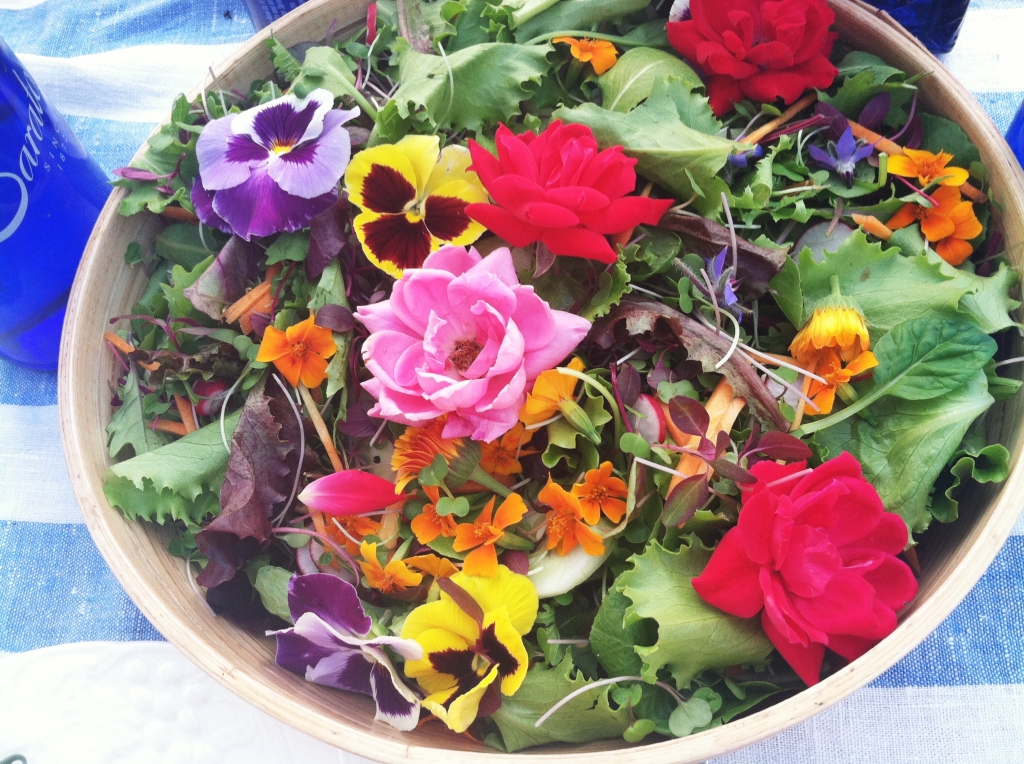A Salad by Any Other Name…
Why is a salad called a salad? These are the questions we (ok, I) ask ourselves as we chomp into the first bites of locally-grown lettuces this season…
“Salad” comes from “sal”, ie, salt. In ancient times (and modern, as well), salt was an ingredient in the salad dressing. As they say, clothes make the man, so it goes for salad.
From An A-Z of Food and Drink by John Ayto:
Etymologically, the key ingredient of salad, and the reason for its getting its name, is the dressing. The Romans were enthusiastic eaters of salads, many of their differing hardly at all from present-day ones–a simple selection of raw vegetables…–and they always used a dressing of some sort: oil, vinegar, and often brine. And hence the name salad, which comes from Vulgar Latin Herba salata, literally ‘salted herb’.
So our ancient ancestors enjoyed salad much the same way we do today (less the brine). And then somewhere, in the turn of the century, things went horribly awry…
From Perfection Salad: Women and Cooking at the Turn of the Century by Laura Shapiro:
Salad greens, which did have to be served raw and crisp, demanded more complicated measures. The object of scientific salad making was to subdue the raw greens until they bore as little resemblance as possible to their natural state. If a plain green salad was called for, the experts tried to avoid simply letting a disorganized pile of leaves drop messily onto the plate…This arduous approach to salad making became an identifying feature of cooking-school cookery and the signature of a refined household…American salads traditionally had been a matter of fresh greens, chicken, or lobster, but during the decades at the turn of the century, when urban and suburban middle class was beginning to define itself, salads proliferated magnificently in number and variety until they incorporated nearly every kind of food except bread and pastry…Salads that were nothing but a heap of raw ingredients in dissaray plainly lacked cultivation, and the cooking experts developed a number of ingenious ways to wrap them up…The tidiest and most thorough way to package a salad was to mold in in gelatin.
Gelatin salads have not, thankfully, been in vogue for some years, though I did see a recipe for one on Pinterest last week. Most home cooks and restaurant chefs prefer a simple dressing to salad, some combination of oils, acids (vinegars), and other flavors (mustard, herbs, etc). The salad greens we grow here at the farm have enough inherent flavor to be eaten un-dressed… but would it still be considered a salad, then?

A very Blue Moon salad, topped with Edible Flowers (lightly dressed)
